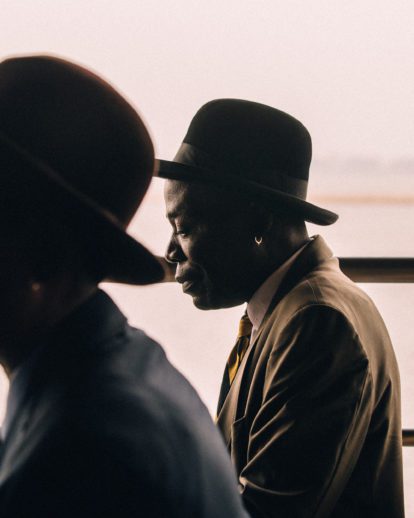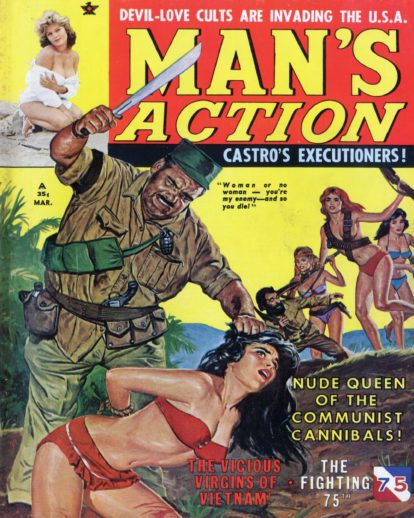Drake Passage is the famously treacherous body of water situated where the Atlantic and Pacific oceans meet in the south. It’s named after notorious buccaneer Sir Francis Drake, who was the first Englishman to circumnavigate the globe. Physical constriction, at a latitude that is otherwise devoid of significant landmass, makes this deep, potentially lethal passage a conduit for the world’s most voluminous currents. Westerly winds often sweep in from all the way around the world.
As a result, conditions at any moment are oddly unpredictable. Seafarers have coined the terms Drake Shake for when the ink-black water, which has claimed the lives of many sailors, rises in 12-13 metre waves, or Drake Lake for rolling swells that reach a mere 2-5 metres.
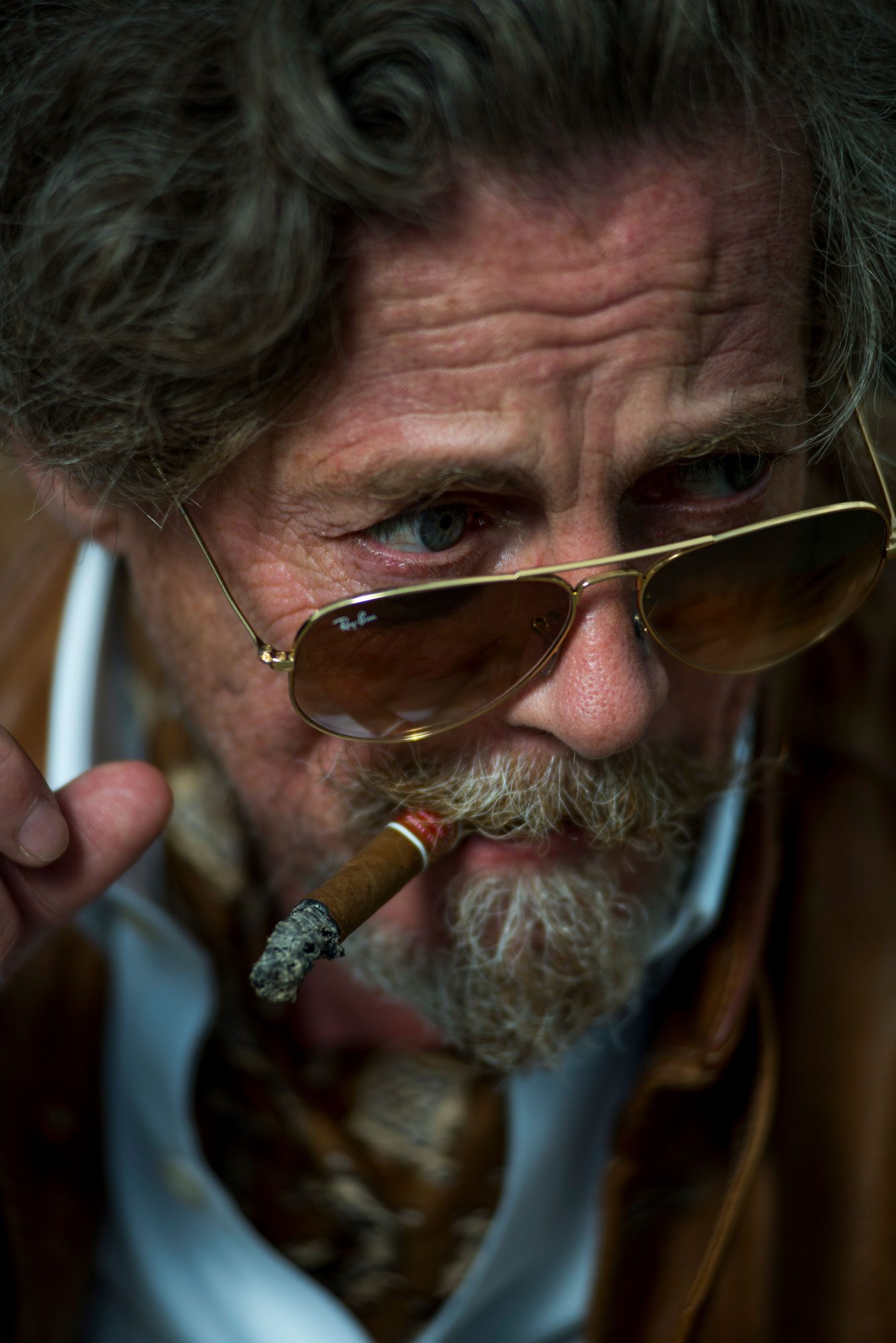
Quentin Smith, helicopter pilot. Photography: Benedict Tufnell.
As pilot Quentin Smith and his student co-pilot Steve Brooks approached the passage in January 2003, they were en route to a South Pole landing attempt to match their champagne-toasted stop three months earlier at the North Pole. Unfortunately, right over the notorious passage, their helicopter developed engine trouble.
The two pilots had an agreed emergency procedure. With great attention to detail, the locations and satellite phone numbers for all ships scheduled to be in Drake Passage had been stashed onboard the helicopter in a waterproof bag. But the method for evacuation had been kept intentionally flexible, if not vague, to allow for shifting circumstances.
‘Is this serious, Q?’ co-pilot Steve Brooks asked tentatively, as the engine continued to splutter.
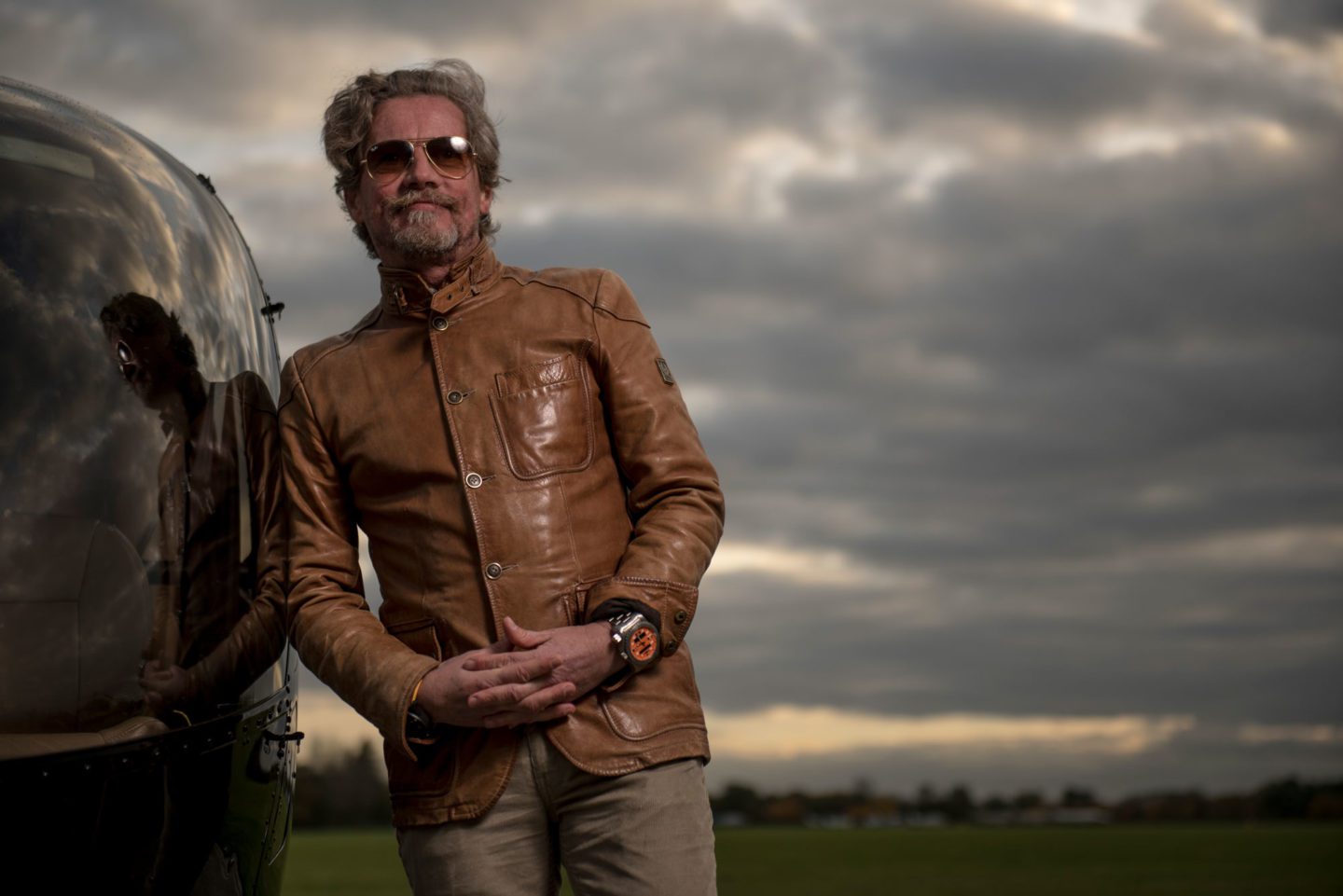
Pilot Quentin Smith wears Breitling Emergency watch. Photography: Benedict Tufnell.
Brooks had 300 flying hours of experience, whereas Quentin, known as ‘Q’ by aviation enthusiasts worldwide, had over 12,000 hours as pilot-in-command.
‘Yes,’ Q replied immediately, ‘fully serious’.
‘So,’ Brooks hesitated, ‘should I grab the dinghy?’
Q nodded and instructed Brooks to clip the dinghy onto his immersion suit D-ring.
Like all helicopter pilots, Q had been trained in autorotation, which can be used to spin the rotor despite an engine failure. Through a combination of kinetic energy from the helicopter’s altitude plus the updraft of air on the blades during descent, a controlled glide landing can be performed. Fortunately, the conditions below were Drake Lake but Q still had to somehow land safely on undulating five metre swells.
‘I was proud of executing an autorotation that wound up putting it beautifully, gently on to the sea,’ he says.
Determined to delay sinking and reluctant to leave his craft, Q explored the damping effect of water on altitude control, discovering that he could keep the cockpit fairly level, as it slowly filled with seawater, for as long as the rotor blades continued to release buoyant energy as they spun overhead. ‘You know when you go swimming as a kid and get underneath an upside-down dinghy, away from commotion outside?’ Q leans close and smiles. ‘That’s a very special sort of space that you share with anyone else inside it and I felt exactly the same in that helicopter, with stuff floating around in the cockpit and me still clinging onto some last beautiful bit of control’.
‘As a physicist, I am very attracted to a spot where all times become directions. At the poles, all times go through your body.’
Quentin Smith
But Brooks wasn’t there. He’d jumped.
‘I had given him two simple instructions – not to jump off the skid until I said ‘GO!’ and to stay with the dinghy uninflated until I got there. So, I knew he’d be dead because he’d dropped too early, despite my repeated shouts of ‘NOT YET!’, when we were still at 80 or 100 feet, I suppose, and 80 knots’.
Q hesitates, relights the stub of a half-smoked cigar, then continues to recount his thoughts during those desperate, crucial moments.
‘In big waves, you can’t see anything. But then, I got a lucky wave and a little glimpse of the dinghy fully inflated. It was 50, maybe 100 yards away. I remember thinking that there is no way to catch an inflated dinghy. And no way to survive in such cold water. I imagined my intercostal [rib] muscles separating, my blood vessels breaking and wondered why the infamous, unsurvivable, 1-degree C Drake Passage water wasn’t bothering me yet’.
‘I swam, pretty ineffectively at first, but after I grabbed two coffee flasks that were afloat nearby, I discovered that my hands fitted into the handles perfectly and it made my swimming much more efficient’.
Against the odds, both men survived more than nine hours in the life-raft until rescued by a Chilean naval ship. In what Q describes as ‘one of the greatest heroic acts of behaviour ever,’ Brooks had jumped in order to stay with the life-raft after he’d accidentally dropped it. Amidst the confusion and haste of that spontaneous decision, they reckon the raft fell down one side of the helicopter skid and Steve jumped down the other side, still attached to the raft by its strap. With the strap slung over the skid, Brook’s fall was decelerated just prior to impact with the sea.

‘Alongside adventure is an obligation to share the beauty of your experience with others. There is absolutely an obligation to do that’.
In what has become the stuff of legend, Q was wearing a Breitling Emergency watch and activated it, which sent out a locator signal that aided their rescue. ‘I felt very sorry for Steve, who became unwell as we waited in the raft. How miserable to die whilst feeling seasick’.
At some point, Q recalled that his father had packed that very dinghy. ‘As he did so, he showed me everything that was going in it – waterproof matches, fishing hooks, repair patches, tinned water and a little tin of all sorts of useful bits and pieces. I was about 7 years-old then and it hadn’t been opened since. So that felt really amazing’.
I meet Q at Denham Aerodrome in Middlesex, home of HQ Aviation Ltd, a helicopter hire and maintenance company where he is managing director and chief flying instructor. In a world of large personalities, his ranks at lion-size – and he has the ability and achievements to match. Guinness World Records acknowledge Quentin Smith as the first European to circumnavigate the globe in a piston (as opposed to turbine) powered machine and the first crew (along with Q’s student pilot Brooks) to fly to both North and South Poles by helicopter. He has twice flown around the world, first from May to August 1997 with his student pilot Jennifer Murray in a Robinson R44 and then again from May to September 2000 as part of an airborne convoy that included two helicopters, one Cessna Caravan and one microlight. In October 2002, again in a Robinson R44, Q and Brooks completed the first flight of a piston-powered helicopter to land on the North Pole.

‘I swam, pretty ineffectively at first, but after I grabbed two coffee flasks that were afloat nearby, I discovered my hands fitted into the handles perfectly and it made my swimming much more efficient.’
In January 2005, two years after surviving their dramatic Drake Passage ditching, Q and Brooks successfully landed on the South Pole, despite first setting their R44 down five miles short due to bad weather. While waiting at 10,000ft for better conditions, they built a miniature igloo around the engine, which they heated using an Avgas-fuelled cooking stove. The engine did start up when weather improved and they completed their quest south.
A Cornishman by birth, Q has twice brought home honours from Helicopter World Championships as both the 1994 and 2012 gold medal winner for freestyle aerobatics. As part of his 2012 sequence, he performed a manoeuvre that many had deemed impossible – an engine off backward landing.
Juliette, Q’s beautiful and charming French wife from Brittany, brings us coffee and mentions that she had decided not to attend that particular aerobatic competition. Theirs was a whirlwind romance. Soon after meeting by chance during a night out, Q whisked Juliette off to Russia to attend an event there together. He proposed marriage just ten days after they’d first met. They wed in 2003 and now have three children.
‘I did fall in love at first sight with Juliette,’ Q recalls. They make a striking couple, both with sideswept hairstyles and relaxed, generous smiles. I wonder what adventures, how many near-death moments, Q has braved.
‘Why?’ I ask him. ‘With your precious young family at home, why would you take such an enormous risk in trying to perform that aerobatic manoeuvre?’
‘Well,’ he replies, ‘I didn’t think of it as a risk. I think of that as a risk mitigated. If I’m really paying attention and I’m trying to do something quite hard, I suppose my father’s upbringing comes into play’. Q’s father, Mike Smith, is a celebrated helicopter pilot. Now retired, Lieutenant Smith was one of the original Borneo ‘Junglies’ of the Fleet Air Arm.

In what reminds me of the classic board game Operation, Q describes a challenge that his father repeatedly impressed on him as a young boy. ‘It was sort of – you’ve got to put your hand here, very, very close to something while you move the rest of your body around, and yet you must never allow that hand to touch the thing that is so near to it. My father used to insist ‘You’ve got to do that’ and if I had said, as a kid, ‘Oh, I’ve just accidentally touched it,’ he would command me ‘No. You can’t. Don’t. It just cannot happen’. So that kind of little piece of logic set has served me very well over many, many years’.
The backward landing manoeuvre was something that experts had considered was probably not possible to do. To prove them wrong, Q did a backwards autorotation at the 2012 World Champs from just 300ft. ‘So, there wasn’t much height and not much speed and that is generally considered to be a place where you can’t tolerate an engine failure anyway. You need some energy up your sleeve somewhere. There is so much going against you. For a start, the helicopter is completely unstable going backwards. It likes going forwards but it doesn’t like going backwards. And you have to have speed to be able to flare at the end. But a helicopter doesn’t like having speed when it’s backwards. The airflow is from an awkward place on your tail and there are lots of stability issues. I practiced two years of slow, tiny little incremental steps to master that manoeuvre. With freestyle aerobatics, everything has to be completely nailed. It’s not just random’.
Q, like all the aerobatic pilots I know, talks about flying sequences with his hands. Had he been standing, he would have undoubtedly used his whole body to perform manoeuvres as he explained them, in the same way that pilots awaiting their turn to display will practice walking through their sequences on the ground.
‘For me, aerobatics isn’t what it appears to be,’ Q muses. ‘I love that art of handling. It’s an expression of your comprehension, which is generally personal and private but it’s also quite nice to share this understanding at times. However, I don’t like to promote aerobatics. It might encourage people to try hairy things without good preparation. Helicopter aerobatics is much more unforgiving than in an aeroplane. Everything is all absolutely fine until it isn’t and then it’s all completely not OK’.
Part of what helps Q mitigate some of the huge risks that he regularly takes is his background as a physicist. Physics, he says, fills you with a wonderful joy of understanding of physical properties and phenomena around you and, in particular, how they work.
‘You can fly for hours over vast openness and there, over the horizon, slowly come the tall buildings of a city rising like the moon.’
Quentin Smith
‘After a while, it gives you great clarity of thought’. The helicopter, he tells me, is one of the simplest, most naturally elegant machines that man makes. ‘I have spent lots of time looking at birds and how birds fly, like how they harvest little windsheer energy from differences in windspeed. Birds take their power and apply that to push their wings through the air. But birds have a small design issue. They have to stop and start and do it again’.
‘Trees are not similarly restrained. Trees,’ Q smiles as he grabs a cigar box full of sycamore seeds, ‘make a rotating wing’.
Q and I watch as one seed that he has dropped from head height flutters down onto his palm. ‘Helicopters are powered rotating wings, a bit like a powered sycamore seed, which is a combination of what trees try to do with wings and how birds fly. And to rotate something with an engine is about the simplest thing you can do with an engine. Most engines make a rotating output, so all you’ve got to do is arrange to push this thing around and round’.
Delving ever deeper into helicopter physics, Q mentions that people are slightly distrusting of wings and, especially, terribly thin helicopter rotor blades.
‘But once they understand that there is only a tension force and that this tensile force is fed down the length of the rotor blades then, actually, it’s a much easier way to make things strong than with aeroplane wings, which must be made deep enough to resist sheer force. So, with this elegant fundamental at work, a rotor is like a strong cable on which the helicopter hangs.’
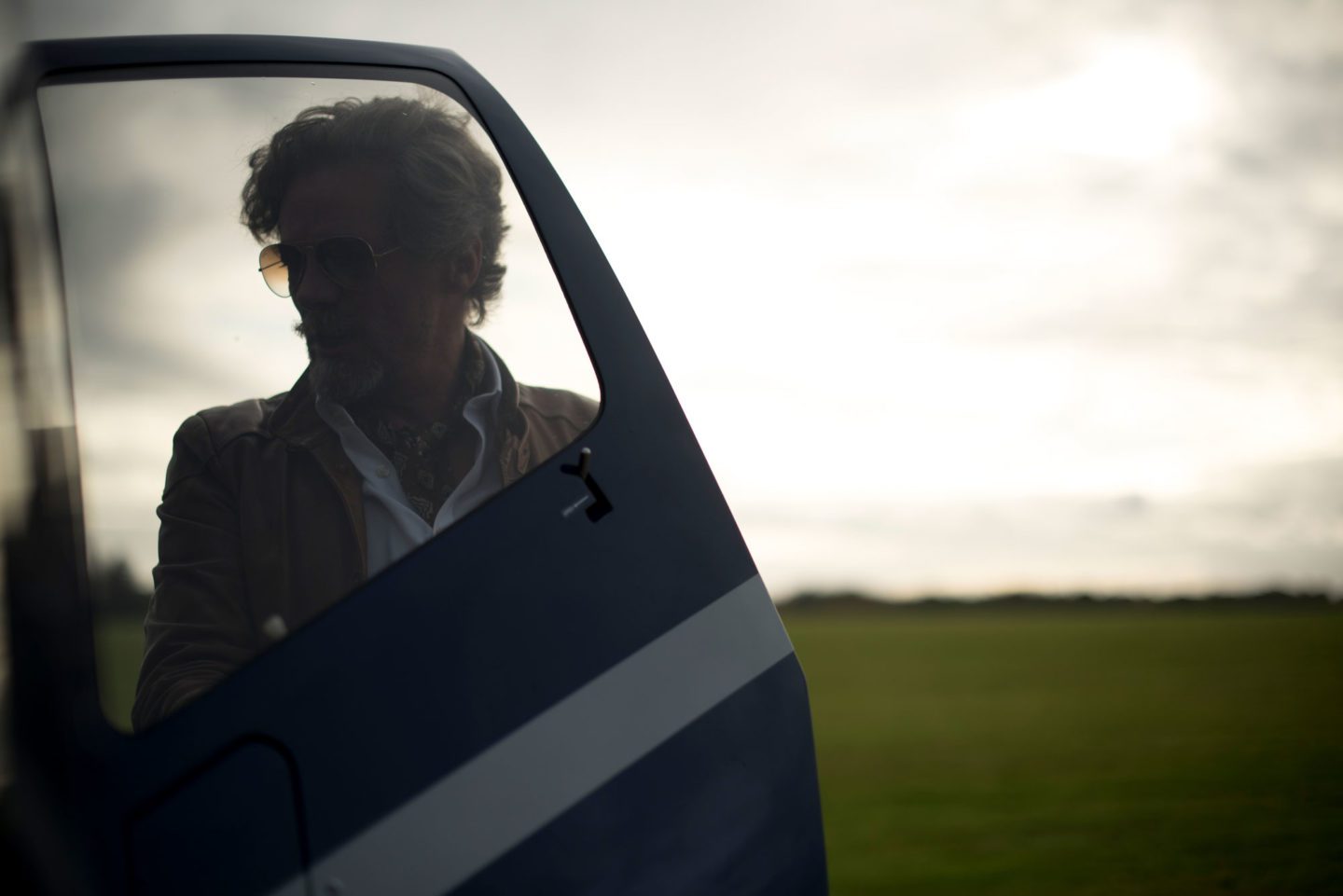
Unlike aeroplanes, he continues to explain, both birds in flight that are gliding, not flapping their wings, and helicopters in powered flight have naturally varying aerofoils. Both the bird’s wings and the helicopter’s rotor blades are hinged and work by making an angle of attack that produces lift. Angle of attack, Q says, is one of the key variables that we can alter to change how much lift we make. Whereas birds achieve this through use of their neurons, muscles, tendons and so on, freely hinged rotor blades can go wherever the forces pull them. So, gliding birds and helicopters in powered flight are, in effect, self-compensating lift seekers. It is, for him, a particular cause of lament that 99.9% of the population thinks, as I did before our meeting, that helicopters drop like a brick if the engine fails. It appears to be intuitively obvious. But, in fact, all helicopter pilots must learn the skill of autorotation to glide down safely.
‘So, should we go for a flight?’ Q asks. Such is his charisma, I don’t hesitate to agree. Before meeting him, I had no intention of flying in a helicopter.
I ask Q what has made him fly to the poles. ‘As a physicist, I am very attracted to a spot where all times become directions. Time changes meaning the further north or south you go. At the poles, all times go through your body.
If you take a 24-hour watch to the pole and point the hour hand at the sun, all times are on the dial,’ he laughs. ‘But they are all directions to places’.
Numbers
15,000+
Flying hours
2
Number of times flown around the world
5
Age of first flight
‘I do have a fascination with scale,’ Q continues, ‘that started when I was six’. His father used to make young Q run around a block of housing at Gerrards Cross on a regular basis. ‘At first I resented it quite a lot that he would make me run around the world. That set of houses was my world. Sometimes I stood right at the edge and wondered how far across fields I’d have to go before coming across another set of housing. I thought about the size of the gaps in between and realised that there was no representative way for me to understand that scale’.
As an adult, Q has put right this childhood slight, twice over, by flying around the world. ‘It is indescribably beautiful to watch the world change slowly and to have the freedom to move and go closer to look at things. It’s the way you dream and move when you’re free. If you think about dreaming flying, you’re dreaming the kind of motion that a helicopter does, going up and around and over things, wherever you want to go. The air around here, everywhere, all of this air is continuous’.
He describes our world as sparsely populated. ‘You can fly for hours over vast openness and there, over the horizon, slowly come the tall buildings of a city rising like the moon, and you realise how incredibly rare these things are’. Sadly, Q says, we have built up our clusters of civilisation in only one dimension. ‘That is the worst scale mistake you can make. The texture of humanity, all of the infrastructure that we’ve sculpted to suit cars, is one-dimensional. We have routes and nodes. For driving around, there are tarmac strips everywhere on surfaces where people are trying to live. Houses are built by roads. It becomes impossible to feel any neutral appreciation of scale. It’s madness’.
With outsight gained from his extensive world travels, Q believes that using sky as transport has to be the eventual logic. And, of course, his vision is populated with helicopters. ‘It’s a much simpler and more efficient machine for travel than a car. People could, therefore, disperse more widely and live in more places around the world. Everyone would gain more space’. Q describes this polemic as a human freedom liberty issue – the freedom of our sky.
How does it feel, I ask him, when you return from flying around the world? ‘As if the world has been moving a lot,’ he nods. ‘It’s a lot of stimulation, it’s really excess stimulation for a human, too many things to take in and too many cultures and people to process. But it’s also stunningly beautiful. It can take me a year to wind down afterwards, just to chill out and try to normalise. I find it hard to talk to ordinary people right after an experience like that. So, when that happens, I like to check out, maybe sit in a darkened, quiet room with a movie or play some sort of simple, robotic computer game for a while. It’s a bit like meditation’.
But then, soon enough, Q returns to his normal routine. With cigar smoke swirling around his office up in the hangar eaves, he sums up what really matters: ‘Alongside adventure is an obligation to share the beauty of your experience with others. There is absolutely an obligation to do that’
